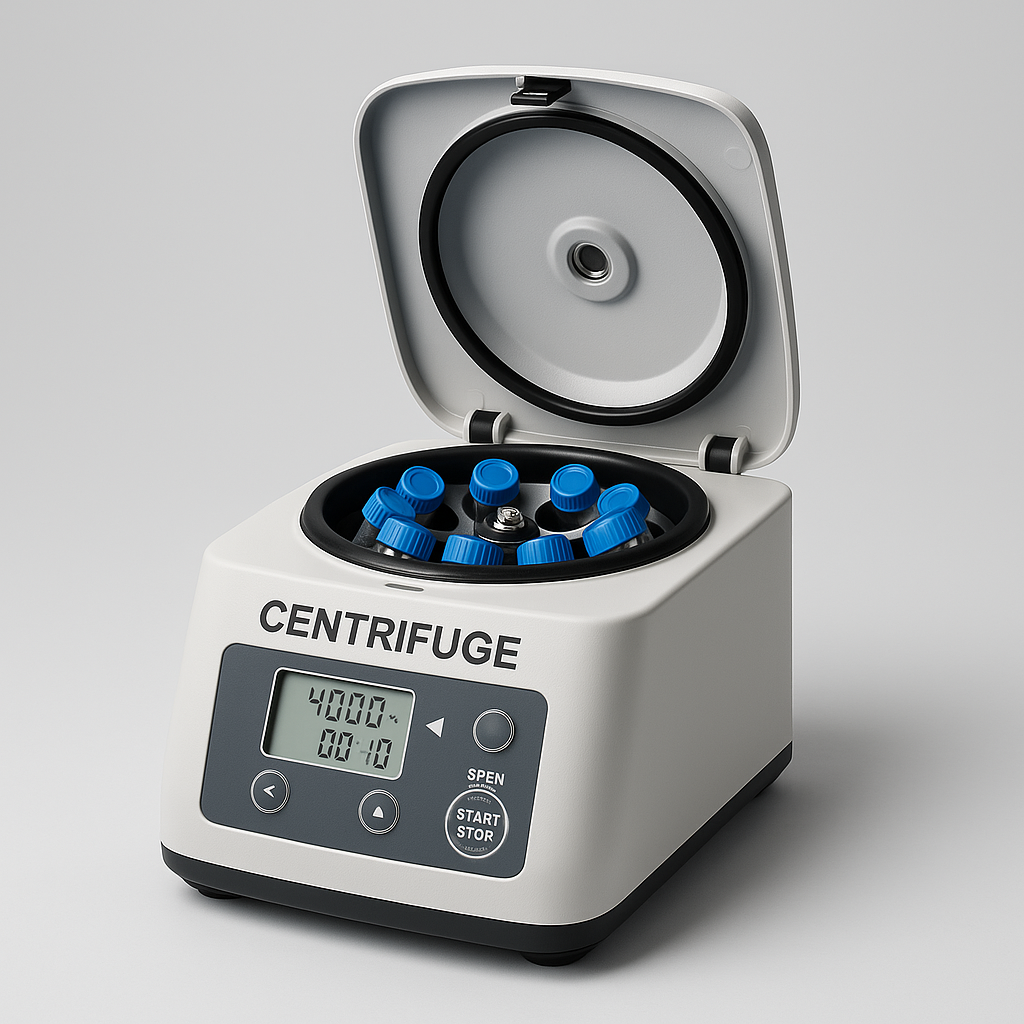The Ultimate Guide to Spinning Science Into Action
Centrifuges are essential tools in science, medicine, and industry. But how do they work? What exactly makes spinning things at high speed so useful?
Unlike everyday machines, centrifuges harness the power of centrifugal force—a force that separates substances based on density. From separating blood plasma in hospitals to purifying proteins in biotech labs, centrifuges are the unsung heroes of precision.
In this guide, we’ll explore:
✅ What centrifuges are and how they work
✅ The different types of centrifuges
✅ Applications in science, medicine, and industry
✅ Tips to use and maintain a centrifuge effectively
Let’s spin into the world of centrifuges and break it all down! 🧪⚙️
🌀 What Is a Centrifuge?
A centrifuge is a machine that rapidly spins containers to separate components of a mixture based on their density.
🌪️ How it works:
By spinning samples at high speeds, centrifuges create a powerful centrifugal force—pushing denser particles outward and leaving lighter ones closer to the center. It’s like being on a merry-go-round: the faster you spin, the more you feel pushed to the edge.
🧬 Types of Centrifuges (And What Makes Them Different)
Not all centrifuges are created equal! Here’s a breakdown of the main types and their specialties:
1. Microcentrifuge
🔬 Used for small volumes (0.5–2 mL)
Perfect for DNA, RNA, or protein samples
✅ Ideal for molecular biology labs
2. Benchtop Centrifuge
💉 Handles medium-sized tubes (5–50 mL)
Great for clinical labs or university classrooms
🎓 Versatile for both education and diagnostics
3. Ultracentrifuge
⚡ Extremely high speeds (up to 100,000 rpm)
Used to separate very tiny particles like viruses or proteins
🧪 Essential in virology and nanotechnology
4. Refrigerated Centrifuge
❄️ Keeps samples cool during high-speed spins
Preserves temperature-sensitive samples like enzymes
🧊 A must for delicate biological work
5. Industrial Centrifuge
🏭 Large scale and rugged
Used for wastewater treatment, food processing, oil purification
⚙️ Built for efficiency and high-throughput operations
🧲 What Can Centrifuges Separate?
The real power of a centrifuge lies in what it can separate. Some examples include:
🔴 Blood Components – Plasma, white blood cells, red blood cells
🧪 Cell Parts – Nuclei, mitochondria, membranes
🥛 Milk Separation – Skim milk and cream
💧 Waste Treatment – Solids and liquids
🌿 Plant Extracts – Oils and bioactives
🛠️ How to Use a Centrifuge (Without Breaking It)
To ensure accuracy and safety, follow these centrifuge tips:
✅ Balance Your Samples – Always place tubes of equal weight opposite each other
✅ Secure the Lid – Safety first! Prevent spills and damage
✅ Select the Right Speed (RPM or RCF) – Match speed to your sample type
✅ Cool It Down – For temperature-sensitive materials, use a refrigerated model
✅ Clean Regularly – Avoid cross-contamination and keep rotors debris-free
📏 RPM vs. RCF:
- RPM = revolutions per minute
- RCF = relative centrifugal force (accounts for rotor size)
Use a conversion calculator if needed!
🌟 Common Centrifuge Applications
From everyday science to life-saving research, here’s where centrifuges shine:
🧫 Clinical Diagnostics – Blood testing, urine analysis, vaccine development
🌱 Biotechnology – Protein purification, DNA isolation, cell harvesting
💊 Pharmaceuticals – Drug formulation, quality control
🌊 Environmental Science – Water testing, soil particle analysis
🛢 Industry – Oil and lubricant clarification, chemical extraction
❗ Centrifuge FAQs
1. Why do centrifuges spin so fast?
To generate enough centrifugal force to separate particles effectively—even ones too small to see!
2. What happens if you don’t balance the tubes?
⚠️ Major vibrations, sample loss, or rotor damage! Always balance tubes properly.
3. Can you use a centrifuge without a lid?
Never. It’s a safety hazard. The lid protects you and ensures proper function.
4. What’s the difference between centrifugation and filtration?
🌀 Centrifugation separates by density using force.
🧃 Filtration separates by size using a physical barrier.
🧪 Final Thoughts: Why Centrifuges Matter
Centrifuges are more than just spinning machines—they’re precision instruments that help us understand, purify, and innovate. Whether you’re a student, scientist, or industrial technician, mastering centrifuges means unlocking the power to:
✅ Analyze biological samples
✅ Speed up scientific discovery
✅ Improve quality in industrial processes
✅ Keep clinical diagnostics fast and accurate
🚀 From labs to factories, centrifuges keep the world turning—literally and scientifically!

Leave a Reply